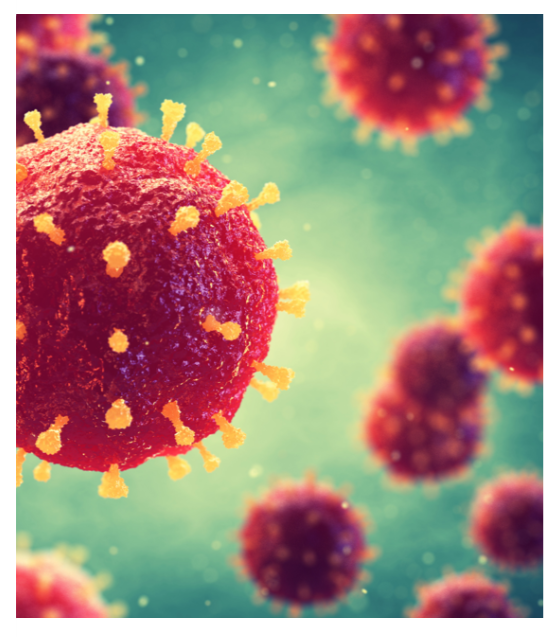Staff Writer
Around 1.4 million people die every year from viral hepatitis. And 80 % of liver cancer cases in the world are a result of the hepatitis B and C viruses together. That means that 2 of every 3 deaths from liver cancer are attributed to viral hepatitis. There is no doubt that these numbers indicate a global epidemic that is adversely affecting the lives of people. Yet that is not the worst thing about these figures. The World Health Organization believes that currently as many as 90% of people with hepatitis B, and 80% with hepatitis C are not even aware that they are infected with the virus. July 28th is World Hepatitis Day.
This day is designed to raise awareness of the global impact of viral hepatitis and the actions being taken to counteract the scale and scope of this problem. The Day is recognized in over 100 countries according to the World Hepatitis Alliance (WHA). The Alliance is an organization representing 325 million people globally living with viral hepatitis. So what is viral hepatitis?
The WHO (World Health Organization) defines it as “an inflammation of the liver. The condition can be self-limiting or can progress to fibrosis (scarring), cirrhosis or liver cancer. Hepatitis viruses are the most common cause of hepatitis in the world but other toxic infections, toxic substances (e.g. alcohol, certain drugs), and autoimmune diseases can also cause hepatitis.” Reports say that globally, in excess of 290 million men, women and children live with hepatitis B or C and are not even aware of this fact.
There are actually 5 types of hepatitis. They are Hepatitis A, B, C, D and E. Types B and C are in fact the most common causes of liver cancer in hundreds of thousands of people around the world. Hepatitis A and E usually occur when a person has ingested contaminated food or water. Hepatitis B, C and D come from contact with contaminated blood or blood products, contaminated medical equipment used in invasive medical procedures and sexual contact with infected partners. A mother may also pass the virus on to her baby at birth.
The important thing we have to understand is even when a person has an infectious or chronic form of hepatitis, there may not always be any identifiable symptoms. This is the reason combating this disease requires more widespread testing as part of all eradication initiatives. On the other hand, some individuals may experience symptoms very early after infection. The following are some of the signs to watch out for; Flu-like symptoms, Tiredness, Loss of appetite, Stomach pains and Dark urine.
Treatment depends on the type of hepatitis that the doctors are dealing with in a presenting patient. So for example, Hepatitis A and B will eventually run its course in a person’s body without any treatment, much like the common cold. Then there are antiviral medicines for acute as well as chronic types of hepatitis C. The medicines can lead to a complete cure. So within 2-3 months over 95% of people diagnosed with Hepatitis C can be cured if treated according to the CDC. Sadly, there is no antiviral medication for Hepatitis D and E. It is possible to get vaccinated against Hepatitis A and B. In fact, for as little as 20 cents, a birth-dose vaccine can be administered to babies that will prevent hepatitis C. Despite what appears to be an affordable and reasonable price for prevention, 48% of countries don’t vaccinate.

WHA has partnered with thousands of organizations across the globe with plans to ultimately eradicate this silent epidemic. The numbers will not decrease unless governments intentionally take urgent action to change this upward trend before this hidden killer wreaks silent devastation on the health of millions of lives. On World Hepatitis Day 2018, the Alliance launched “Find the Missing Millions.” This was a 3-year global awareness-raising and advocacy campaign, and so it remains the theme for 2019. The plan is to effectively breach the barriers preventing a diagnosis of viral hepatitis by working with community-based organizations in affected places. The hope is that this frontal attack will advance the World Health Organization’s target of a 30% diagnosis rate by the year 2020.
For the very first time, the United Nations Sustainable Development Goals include viral hepatitis as an area of focus in its health-related goals (Goal 3.3). The aim is for nations to achieve these goals by 2030. They will bring about a better, healthier, more prosperous future for the peoples of the earth. We are pleased that the World Health Organization’s Global Virus Hepatitis Strategy was adopted by every member state in 2016. The Strategy aims to reduce deaths from viral hepatitis by 65% in 2030. Correspondingly, they aim to see an increased take- up of treatment from 1% to 80%. Although these appear to be rather lofty ambitions, there is an urgency that requires all-out counter-offensive action from all countries around the world.
Finally, for everyone who has not been tested, it is important to do so. Don’t wait around for symptoms to appear – you may be among the huge numbers who do not exhibit any at all. There is a Risk Assessment developed by the CDC. The Assessment allows individuals to get a personalized report of hepatitis testing and vaccination recommendations in about 5 minutes on their site. Go to www.cdc.gov/hepatitis/riskassessment/index.htm. World Hepatitis Day is a perfect opportunity to encourage awareness and testing among family, friends and neighbors.

